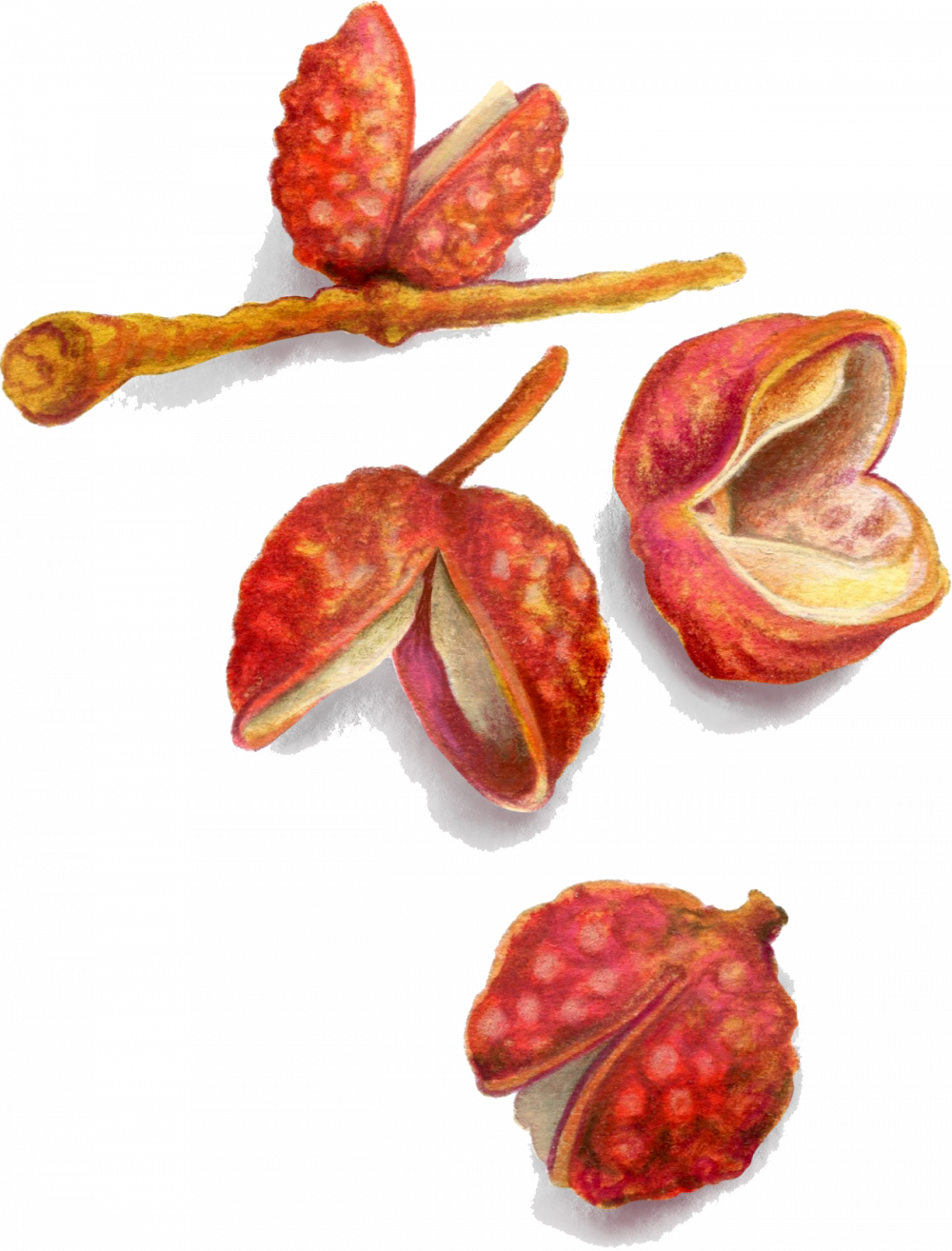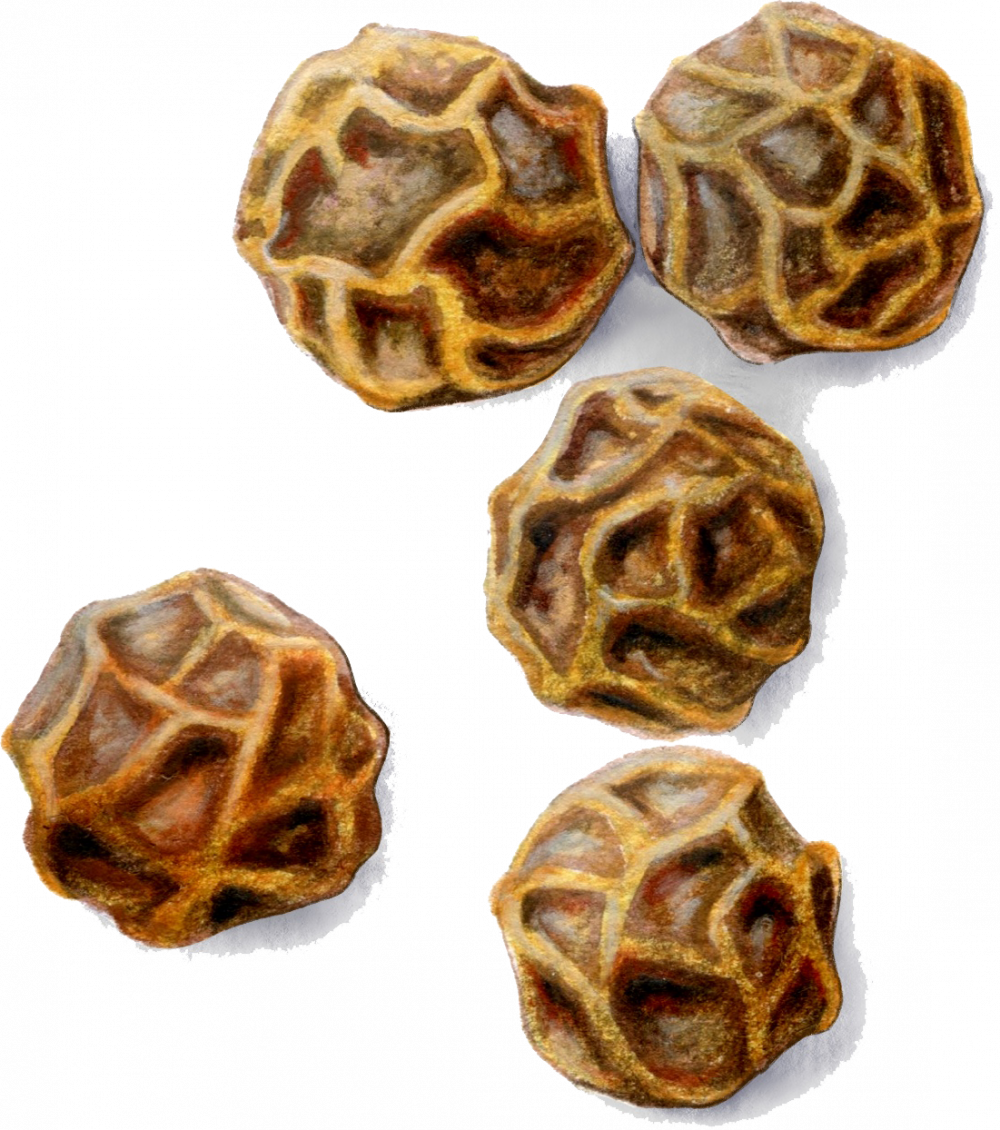
BLACK
Black peppercorns are picked unripe, briefly fermented, then dried in the sun, where they shrivel and darken. As with wine, terroir affects flavor—the taste of black peppercorns can vary widely depending on where they’re grown. They generally have a robust burst of heat that doesn’t linger. Black peppercorns offer the best flavor and texture when coarsely ground, as in stir-fried black pepper chicken (see p. 19). Or take advantage of their aromatic qualities by mixing whole peppercorns and bay leaves into white rice before steaming.
Green
Green peppercorns are unripened peppercorns that are consumed fresh, dried or brined. They have a mild, peppery bite and a subtle herbaceous finish. They are a particularly popular ingredient in French cooking, as in steak au poivre. In Southeast Asian cooking, sprigs of fresh green peppercorns often are tossed into stir-fries and curries. They pair well with red meat, oily fish and vegetables such as cauliflower. Sprinkle whole brined peppercorns into potato or egg salads and use as a garnish for creamy pastas.
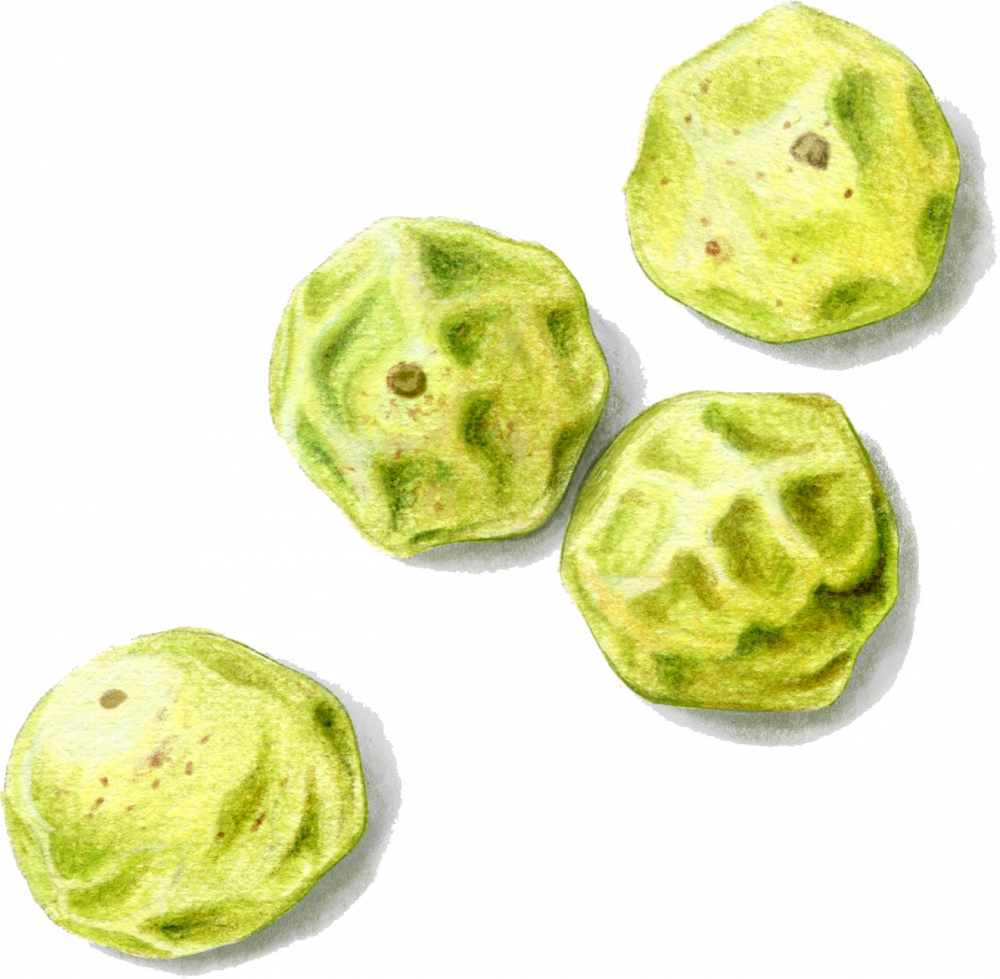
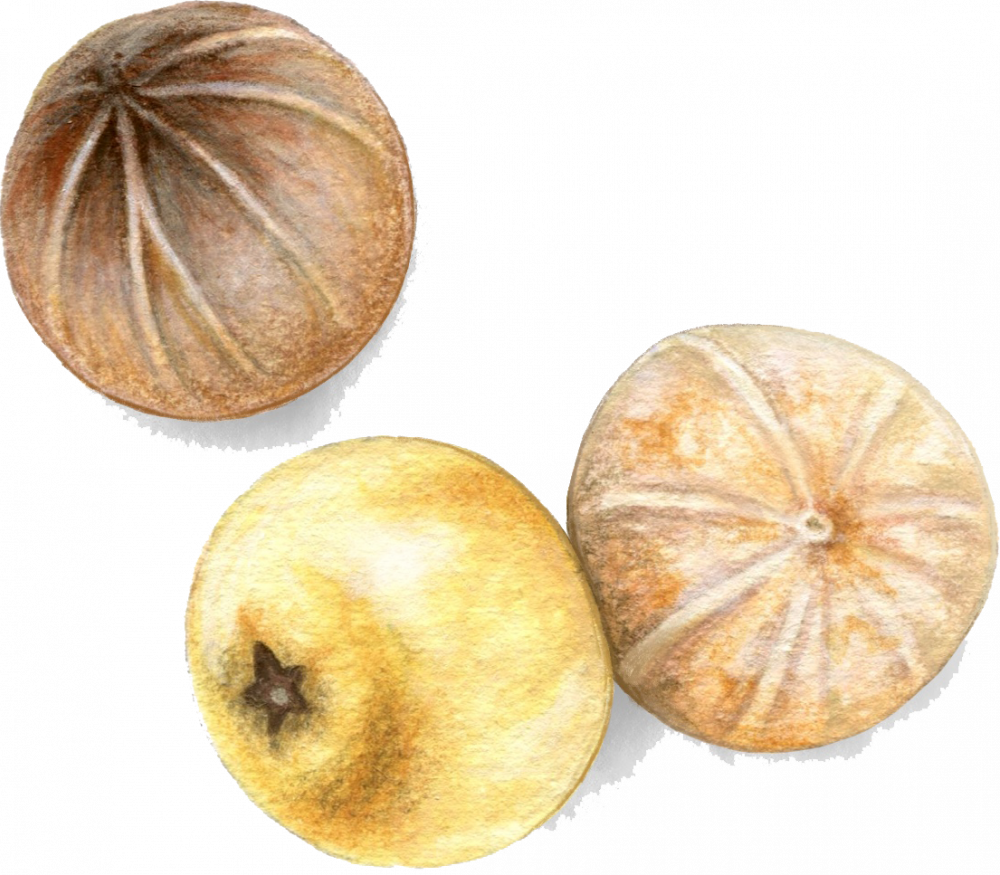
White
White peppercorns are ripened longer than black before being fermented, dried and hulled. Since the hulls contain much of a peppercorn’s flavor, this variety has a milder taste and aroma. In Europe, it’s used in white sauces; in China, it’s a defining flavor of hot and sour soup; in Southeast Asia, it’s matched with fermented fish products. Mix with black pepper for an everyday seasoning with complexity, add to gingerbread, or pair with fish sauce, lime and brown sugar for marinades.
Long Pepper
Belonging to the same botanical family as black, white and green peppercorns, long pepper has a subtler flavor with hints of warm spice. It can be used interchangeably with black pepper, though it may not be effectively ground in a pepper mill; use a spice grinder instead. Long pepper is used broadly in Indian, Pakistani, Indonesian and Malaysian cooking, as its warm heat pairs nicely with fish sauce and palm sugar. The warm flavors work particularly well with legumes and in curries.
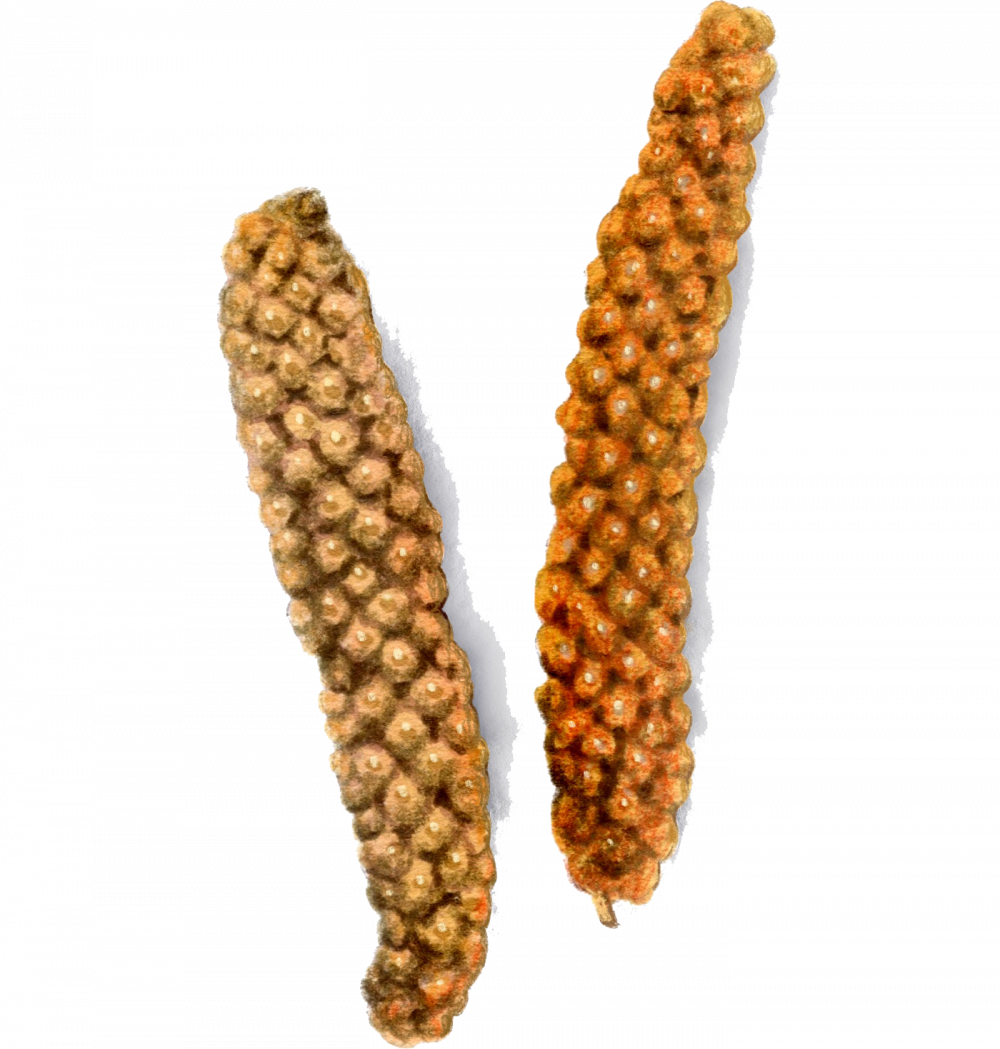
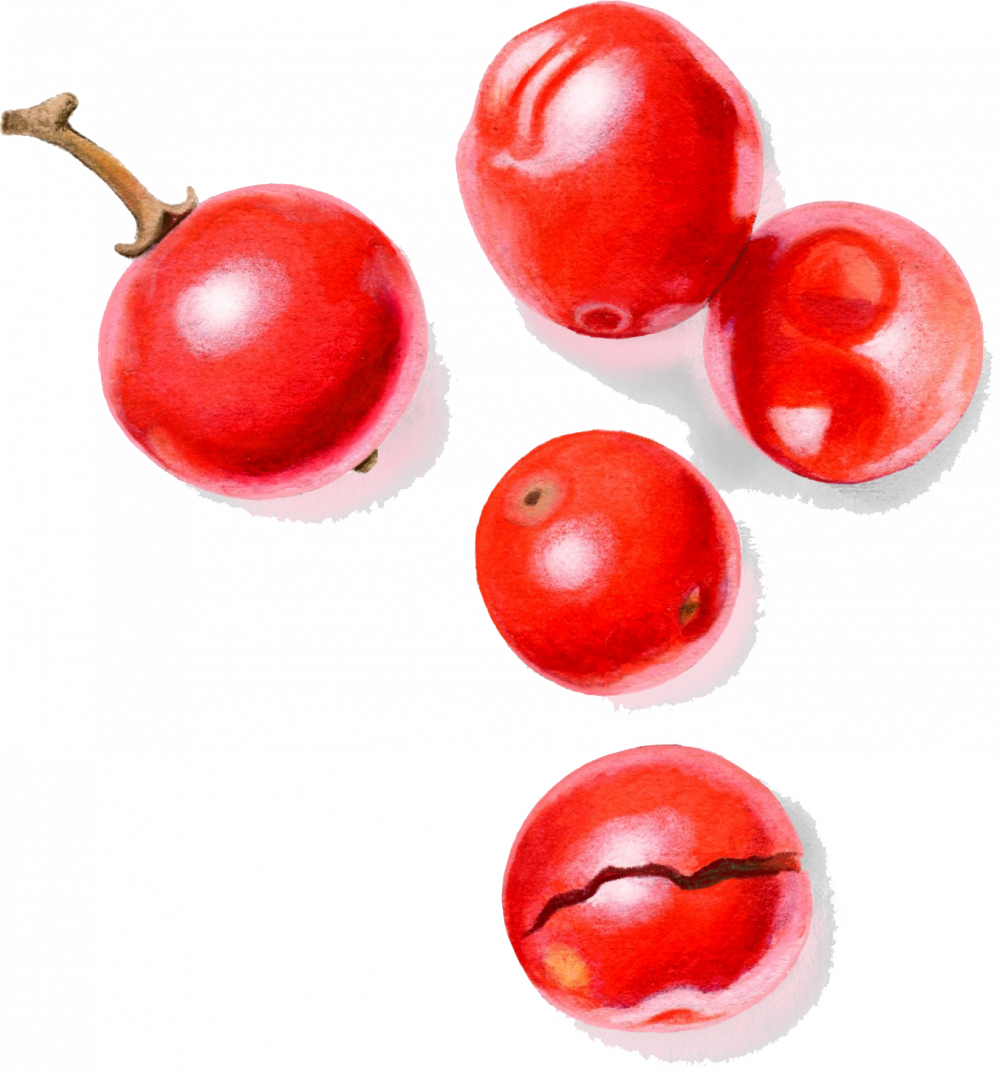
Pink
Pink peppercorns are not true peppercorns, but rather the dried berries of two different species of South American trees. They grow in clusters and turn red when ripe. Dried pink peppercorns are mildly spicy, with a delicate, fruity flavor. Pink peppercorns work well in both sweet and savory applications. Crush them lightly and mix with coarse sea salt or melted butter for a finishing sprinkle or drizzle for fish and sautéed vegetables. Coarsely grind, then fold them into shortbread cookie dough, or pair them with sliced strawberries and honey.
Sichuan
Sichuan peppercorns are the dried fruit rinds of the prickly ash, a tree native to China. The red varieties are stronger and earthier, and the green are brighter and pinier. When eaten, the peppercorns produce a tingly sensation on the tongue thanks to a compound that creates the perception of touch rather than heat. In Sichuan cooking, the peppercorns typically are paired with fiery chili peppers. The combination is added to stir-fried meats and vegetables, simmered in stews and braises, such as the pork-and-tofu dish mapo dofu, and added to soups, including the beef noodle soup that is Taiwan’s national dish. Grind and blend with equal parts kosher salt and sugar to garnish fried chicken and roasted or grilled meats and fish.
